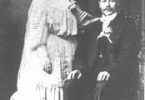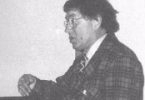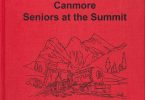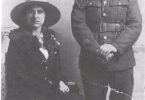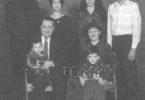Told by Marie (Mary) Rodda
Antonio (Tony) Chiaverina came from the Italian principality of Piedmont, which borders Switzerland and France. His family had a vineyard and a dairy and it was expected that Tony, the only son, would take over these businesses but he had different ideas. He came to Canmore in 1906 to work in the coal mine. He liked the Bow Valley so sent for his fiancee, Camilla Besso, to come to join him. She arrived, travelling with her older brother, Adolph, in August, 1907. Next morning, when they wakened, there was a foot of snow on the ground and Camilla vowed she would return to sunny Italy as soon as she could. However, she and Tony were married after the church service on August 25, 1907, in the Presbyterian Church (now Ralph Connor Memorial United Church) and she stayed in Canmore.
Tony worked laying track for the coal trains underground but quit his job after an explosion in the mine. He then took a job at the new mine at Bankhead. Planned and built by the Canadian Pacific Railway, Bankhead was a modern town where all the houses had running water, sewers and electricity, much better than many of the cabins in Canmore which still were lit by coal oil lamps and water came from a well in the yard. Camilla enjoyed the move to Bankhead and their first daughter,Marie Katherine (Mary) was born there in 1908. Two more girls were born, Lydia Virginia in 1912 and Anita Edvige in 1916. Camilla baked bread in a brick oven outdoors.
The Bankhead mine closed in the early twenties, many of the houses were moved to Banff and Canmore, and the Chiaverina family returned to Canmore in 1922. By this time, Camilla’s brother, Adolph Besso, had become a safety boss at the Canmore mine and conditions had improved.
Mary, fourteen at the time, remembers that they moved to hospital hill where living conditions were not as good as in Bankhead. There was electricity and water in the kitchen but no sink or sewer. “We just threw waste water onto the ground.”
During strikes at the mines, Tony’s early experience in dairying was useful because there was a dairy outside Banff on the road to Bankhead which was pleased to have his experienced help.
Mary continued her schooling in Canmore but left school just two months short of completing grade twelve because of a dispute with a French teacher. Instead, she went to Calgary to take a hair-dressing course, in the era when bobbed and marcelled hair was becoming the vogue. There were no hair dryers, but the hair was marcelled (waved) using warm irons. Mary then returned to Canmore and set up her hairdressing shop in her parents’ home. In the fall of 1949, her daughter Lorraine braided her hair and wound the braids in a coronet around the head. Mary still wears her hair that way and has never cut it since.
Mary married Alphonsio Peter Rodda on September 2, 1928, in the Canmore United Church, the same church where her parents had married. Alphonsio was seventeen when he came to Canmore from Piedmont to live with his older brother, Atilio (Harry). He worked in the coal mine and continued to do that for a few months after their marriage. Then there was a strike at the mine and he was offered a job at the Canmore Hotel. Thus began a lifetime in the hotel business.
The hotel was owned by Joseph Schiesel and Mary and Alphonsio managed it for him. When Mr. Schiesel sold the hotel to Mr. Watson, the Roddas carried on as managers. At first, they lived at the hotel with kitchen and dining room downstairs and living room and bedroom upstairs. After their daughter, Lorraine, was born in December, 1929, they moved to a house across Main Street about where the office supply store is now. A second daughter, Corinne, was born in 1932. They lived in that house for about six years and then moved back to the hotel, where Mary did most of the housekeeping, cleaning and making beds. It was difficult to hire help, especially during the war years, so they worked long hours. This finally took its toll on Alphonsio and he developed heart trouble. There were no medications for heart conditions at that time but Mary planned a careful diet for him and he lived until 1952. They had bought a share in the hotel just after World War II, so Mary stayed on as manager until 1965, even though she bought her present home in 1963.
The clients in the beverage room were mostly miners who often came in when they came off shift at the mine. Many were bachelors and considered it their second home. Naturally, arguments would develop and Mary became adept at refereeing these differences and diffusing the hard feelings. In another part of the hotel was a room where Lorraine and Corinne’s friends could come to do homework, sing and enjoy themselves.
A Mr. Pratt, born in Weston, Ontario, came to Canmore in 1886, and was in the hotel business for awhile. Later, he worked around Alberta as a harness maker until he finally returned to Canmore. He lived at the hotel and was part of the Rodda family until his death. The girls remember many pleasant walks with him.
Mary’s sister, Lydia, married Harry Musgrove and her sister, Anita, married Leonard Bloxham.
Alphonsio and Mary’s daughter, Lorraine, married John Fraser of Exshaw in May, 1950, and they moved to Exshaw. They had two daughters, Karen, who married Ian Schofield and lives in Calgary, and Corrinne, who married Roy Nasset. They have two boys, Fraser and John, and live in Canmore. Their other daughter, Corrinne, married Louis Kovacik of Banff where they now live and have a daughter, Loraliegh.
In 2000, Mary is still living in her own home but says she misses seeing all the people whom she used to see at the hotel.
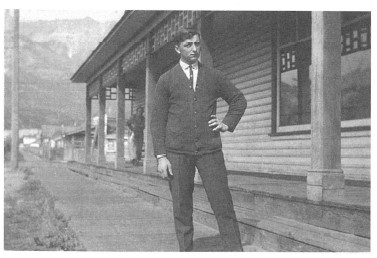
Alphonso Rodda in front of Canmore Hotel
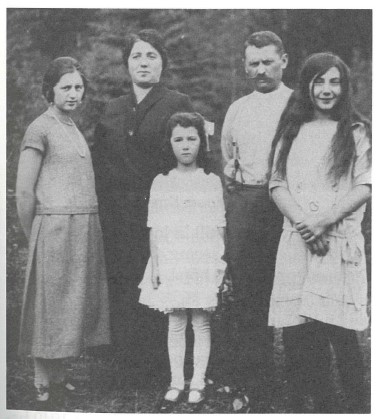
Camilla and Antonio Chiaverina, Marie (Mary), Anita and Lydia
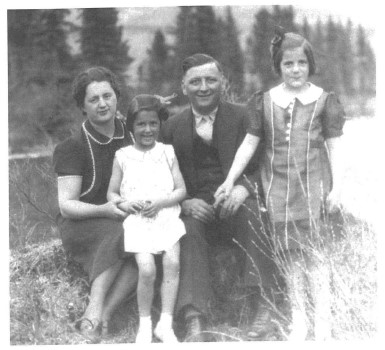
Mary and Alphonso Rodda, Corinne and Lorraine
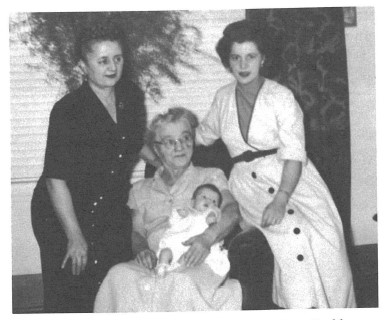
Four generations. Camilla Chiaverina, Mary Rodda, Lorranie Fraser, Karen Fraser
In Canmore Seniors at the Summit, ed. Canmore Seniors Association, 2000, p. 44-46.

